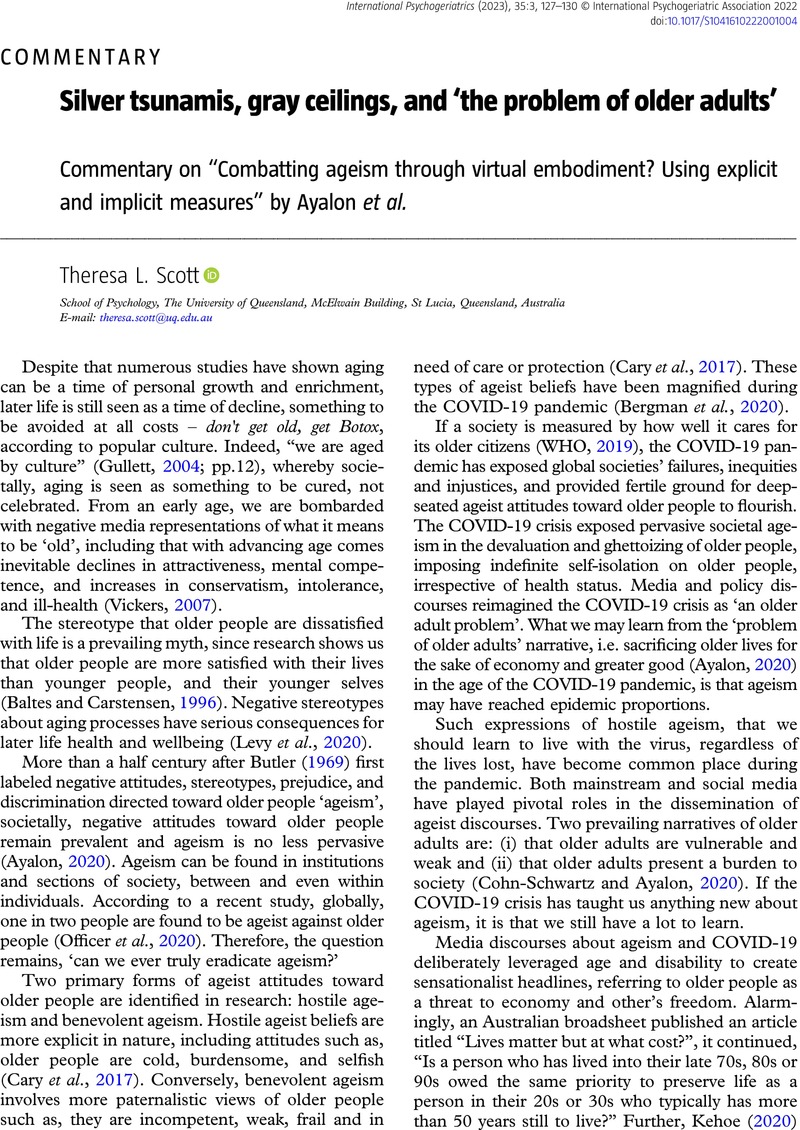Crossref Citations
This article has been cited by the following publications. This list is generated based on data provided by Crossref.
Pachana, Nancy A.
2023.
Innovative approaches to improving mental health and well-being in older people.
International Psychogeriatrics,
Vol. 35,
Issue. 3,
p.
117.
Samson, Laurent
Carcreff, Lena
Noublanche, Frédéric
Noublanche, Sophie
Vermersch-Leiber, Hélène
and
Annweiler, Cédric
2025.
User Experience of a Semi-Immersive Musical Serious Game to Stimulate Cognitive Functions in Hospitalized Older Patients: Questionnaire Study.
JMIR Serious Games,
Vol. 13,
Issue. ,
p.
e57030.



